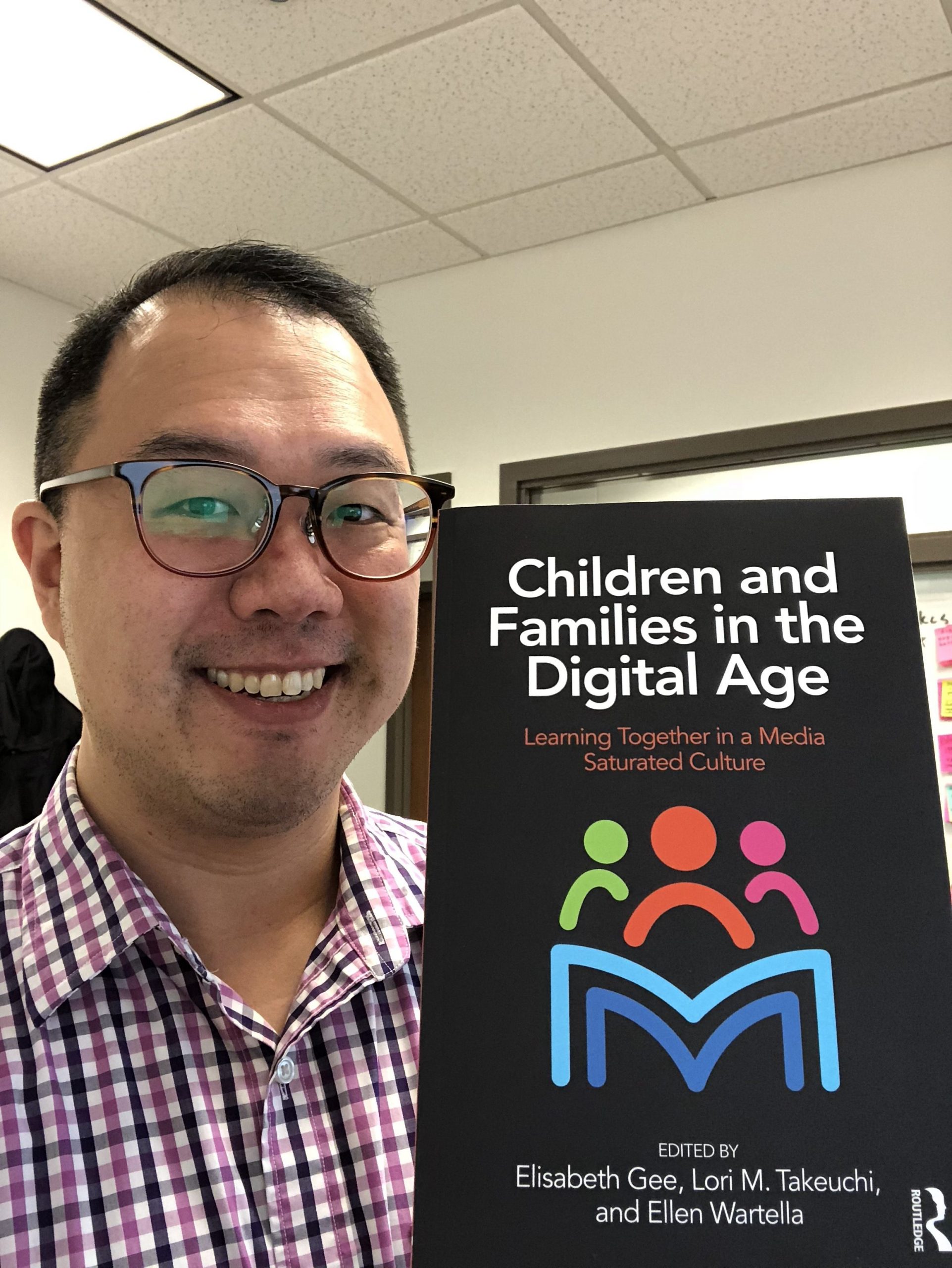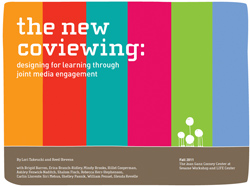On July 6, 2016, Niantic, Inc. released Pokémon GO, which quickly became one of the most popular mobile game apps in history. In this location-based mobile game, players use the GPS capabilities of their smartphones or tablets to navigate an avatar within a virtual world that is overlaid on top of the real world. As players move about in the real world, their avatar moves through the game world, and they can locate, capture, battle, and train virtual monsters called Pokémon—with names like Pikachu, Squirtle, and Jigglypuff—that they find “at” these real-world locations. Pokémon GO also has optional augmented reality features that use a mobile device’s camera so Pokémon appear on the screen as if they were physically in the same space. Thus, you can see a virtual monster named Bulbasaur sitting on a park bench or a Growlithe in front of the family dog on your walk. You can also find eggs and “incubate” them until they hatch additional monsters by earning steps while walking around.

Pokémon GO became incredibly popular immediately, with over 500 million downloads in the first two months, and it seemed to attract adults and children alike. In fact, it quickly became clear that parents and their children were not only playing Pokémon GO individually, but were also playing the game together. While other similar location-based games exist commercially (e.g., Ingress), Pokémon GO is the first popularized mainstream location-based mobile game available for families to play together. In addition, the Pokémon franchise has been around since 1996, meaning that many of today’s parents first encountered the characters in this game when they were kids themselves—and many enjoy the nostalgia while sharing it with their own kids.

So why is Pokémon GO special when it comes to families and the games they play? Because games like this can change the way we think about “screen time.” Smartphones, tablets, and even smart watches are just about everywhere today, among adults, teens, and children. Screen time is a hot topic for families. Often the very concept of screen time causes worry and guilt for parents: “Is it okay to give my phone to my toddler for 15 minutes so I can drink my coffee in peace?” “This app is supposed to be educational, so that’s okay, right?” There is fear that too much time with screens is displacing “healthier,” more “educational,” or more “social” activities. However, as technology and digital media advance, some families are starting to understand how screen time can be active, educational, and social.
Simply put, not all types of screen time are the same. Passively watching TV alone is not the same as playing a fitness game with a sibling or video chatting with a grandparent. The Joan Ganz Cooney and LIFE centers have taught us that one way to understand this difference is joint media engagement (JME), which refers to the experiences of people using media together and making meaningful connections. This includes viewing, playing, searching, reading, contributing, and creating with either digital or traditional media.
The options for how families can co-engage with new media are quickly evolving with the advent of newer technologies into mainstream culture. Pokémon GO represents another rapid change in how families can engage with technology together. When the game became a phenomenon last summer, it became clear to us that we could study parents’ perspectives on the game and how parents and children were playing the game together. We wanted to learn more about three main topics:
- The choices parents and families make on how to play the game
- Rules parents set about their children’s game use and why
- How parents might jointly engage in this type of gaming with their children
To answer these questions, we administered a qualitative survey to 67 parents (the majority from the U.S.) and conducted interviews with 20 parents in Seattle, Washington from late-July to mid-August 2016. We approached and interviewed all 20 interview participants in a large public space like Bellevue Downtown Park just outside of Seattle, where they were playing or watching their children play Pokémon GO. Finding participants was not difficult. Yet, running with parents and children to catch Charmander or Dratini during the interview was something we hadn’t experienced in any other user studies!
Other than catching a great variety of Pokémon, what did we find out? It turns out that, in addition to exercise and time outdoors, parents valued how play led to family bonding experiences. Playing together brought families closer, strengthening their common interests and sometimes transcending beyond the game itself. Pokémon became something a mom was able to talk to her usually not-so-talkative son about and something that made a daughter feel excited to hang out with her dad. This play also easily fit into their lives, either coinciding with other important activities like family dog walks or running errands, or becoming specifically planned family Pokémon GO time.
Here are a few favorite quotes from our interviews:
- “I love that this is a game we can play together as a family, and I often play a little during the day (alone) so we can talk about my progress at night. My daughter’s enthusiasm is turning me into a gamer!” (37-year old mother with 7-year old daughter)
- “We go out for long nightly walks as a family… We stop when we see Pokémon and they help to catch them. [The kids] get really excited to go out for walks, so I love taking them.” (31-year old mother with three year old daughter and one-year old child)
- “I grew up on this game. For them to also grow up on it, it’s like there’s that bond, and I learned that my kids can love something as much as I can. We can both be kids together.” (25-year old father, playing with 3-year-old son and 5-year old daughter)
Additionally, we observed that while parents sometimes had traditional concerns about gameplay, new concerns about safety in real-world environments also emerged. These concerns included worries about their children being harmed by strangers or even getting hurt by not looking while walking. Parents made rules and gameplay choices centered around these new concerns to ensure their children were safe. For example, parents reported always accompanying their children while playing, taking turns when playing, and staying in control of the mobile device during gameplay to make sure their children were not harmed in the physical environment.
Takeaways
So what can we as designers, researchers, and parents take away from this study? We hope it can help us begin to understand what makes Pokémon GO a successful digital media resource for joint engagement between parents and children, which can later aid in designing, studying, and co-playing these types of games with children.
First, we believe that Pokémon GO was successful for JME because it supports the six conditions that help families and children come together with digital media.
- Mutual engagement: Pokémon GO lets people of all ages participate equally. Children and parents can take turns catching Pokémon, or children can throw balls in the game while parents evolve characters.
- Dialogic inquiry: They asked questions to one another, learned about characters together, and talked about the locations where they were playing.
- Co-creation: Families can create a shared experience while playing Pokémon GO.
In our research, parents and children learned about the game together and taught each other how to play. - Boundary crossing: The game appeals to players of multiple generations.
Parents who had played Pokémon as kids enjoyed sharing the new game with their own children, who in turn were often pleased to be able to correct their parents – no, that’s not an Abra, it’s a Sandshrew! - Intention to develop: We found that all players were excited to level up.
Parents and children alike played separately during the week and then shared their progress with one another. - Focus on content, not control: Pokémon GO’s simple game mechanics allow people of all ages to engage in play. Parents and children were able to share control, walk, and interact with each other, and they did not have to rely on looking at the screen continuously to play.

Second, based on our research, there are other specific qualities about Pokémon GO that make it particularly encouraging for productive joint family media engagement. As a location-based mobile game, it hinges on players going outside, walking, and working in teams. Therefore, the game reconciles some of the issues parents have with screen time and fits well into the lives of families. For instance, parents and children went on “Pokéwalks” where they would all walk outside together while playing the game.
For our families, this led to new forms of learning, like about the neighborhood. As a 51-year-old mother of a 17-year-old son told us, “What I like about [the game] is that it points out some of the little things (signs or artwork) that I might normally miss. Like at [a nearby lake,] the benches that are PokéStops are marked with memorials. Most people overlook those–it’s kind of cool to stop and read them.”
Pokémon GO also facilitated families and children connecting and being social with other people outside of the family, sometimes in very large numbers. Because the game requires going outside and moving around, there is some incentive to interact with people that are not immediately involved in gameplay. A 43-year-old mother of a 16-year-old daughter found that, “In general other [Pokémon GO] players are quite nice and friendly.” A mother of a 10-year old boy explained that playing one night as her son worked with other players, “They were a team. It was really nice, you know, to open up those channels of communication.” However, we also found that this value conflicts with parental concerns about strangers. This tension highlights the importance of parents mediating their children’s screen time in this context in order for families to gain added benefits while mitigating potential dangers.
Finally, while Pokémon GO was not designed explicitly for co-use on a single device, it is effectively being used as such. We saw a lot of passing back and forth of a device. A 42-year-old mother and her 6- year-old son each got about five minutes each with the phone, passing it back and forth. Another 46-year-old mother who plays with her 7-year-old son said that they set a timer for five minutes each to ensure equal turns. Perhaps because the gameplay can be shared in many different ways, it was especially appealing to parents and children for JME. Some parents wanted to consistently play the game with (and without) their children. Other parents wanted to watch their children play and be their cheerleaders; and some wanted to help when their assistance was necessary. The fact that the roles were not prescriptive allowed different types of families to participate together.
Overall, perhaps it was the Pokémon themselves that initially on-boarded families to play, but the valuable experiences of and interactions within families existed and continued to exist beyond the actual content of the game. Ultimately, it wasn’t really about Pokémon. It was about the special bond and memories that families were able to create by playing together.
Without these other important elements, we think the game’s popularity for families would not have been sustained. We hope this work will inspire new study and design for families’ joint participation with new media.
If you’re a parent who wants to play Pokémon GO with your child, here are some of our tips:
- Safety first. Make sure you talk to your children about why it’s so important to pay attention to their environment when they play. If they are playing with friends, encourage them to take turns. No catching when crossing the street!
- Prepare your children for potential disappointment. They will get yet another Spearow from an egg. A Pikachu might run away. They may never see a single Lapras. A friend will get a Pichu and they won’t. Help them understand that those are exactly the reasons that make them so happy when good things happen in the game.
- There is something inherently “addictive” about collecting these creatures. Try to channel that in a positive way. Several people we talked to encouraged their children to do homework and chores, and rewarded them by having family playtime with Pokémon GO.
- Even young children can play Pokémon GO with you by participating in elements that are developmentally appropriate. While you take over the more difficult elements (like evolving Pokémon) and stay in control of the phone, younger children can do things like practice counting while they throw Poké Balls.
- Think about how you can play Pokémon GO together on one device by taking turns while playing. Set timers, give each player a number of chances to catch a Pokémon, or have each player take on particular actions (catching, battling, etc.).
- Spend time learning about Pokémon both with and without your child. Understand why your child is so excited to see a Snorlax or so disappointed that Chansey ran away. Be prepared to run with them to catch that Arcanine. Share those feelings!
This blog post is based on research completed by Kiley Sobel, Arpita Bhattacharya, Alexis Hiniker, Dr. Jin Ha Lee, Dr. Julie A. Kientz, and Dr. Jason C. Yip, all from the University of Washington. This work has been accepted for publication at the 2017 ACM CHI Conference on Human Factors in Computing Systems (CHI 2017), a leading international conference on Human-Computer Interaction. The research publication can be accessed here.
 Kiley Sobel is a Ph.D. candidate in Human Centered Design & Engineering at the University of Washington. She is also a National Science Foundation Graduate Research Fellow. Kiley is interested in universal design, Interaction Design and Children, Child-Computer Interaction, and Assistive Technology. Her primary research is in understanding how interactive technology might help increase opportunities for children with diverse abilities and needs to equally, actively, and meaningfully participate in the same setting inclusively. She has done assistive technology research with Microsoft Research, worked as a teacher’s assistant in early childhood education classrooms, and worked as a behavioral therapist for children with autism.
Kiley Sobel is a Ph.D. candidate in Human Centered Design & Engineering at the University of Washington. She is also a National Science Foundation Graduate Research Fellow. Kiley is interested in universal design, Interaction Design and Children, Child-Computer Interaction, and Assistive Technology. Her primary research is in understanding how interactive technology might help increase opportunities for children with diverse abilities and needs to equally, actively, and meaningfully participate in the same setting inclusively. She has done assistive technology research with Microsoft Research, worked as a teacher’s assistant in early childhood education classrooms, and worked as a behavioral therapist for children with autism.



